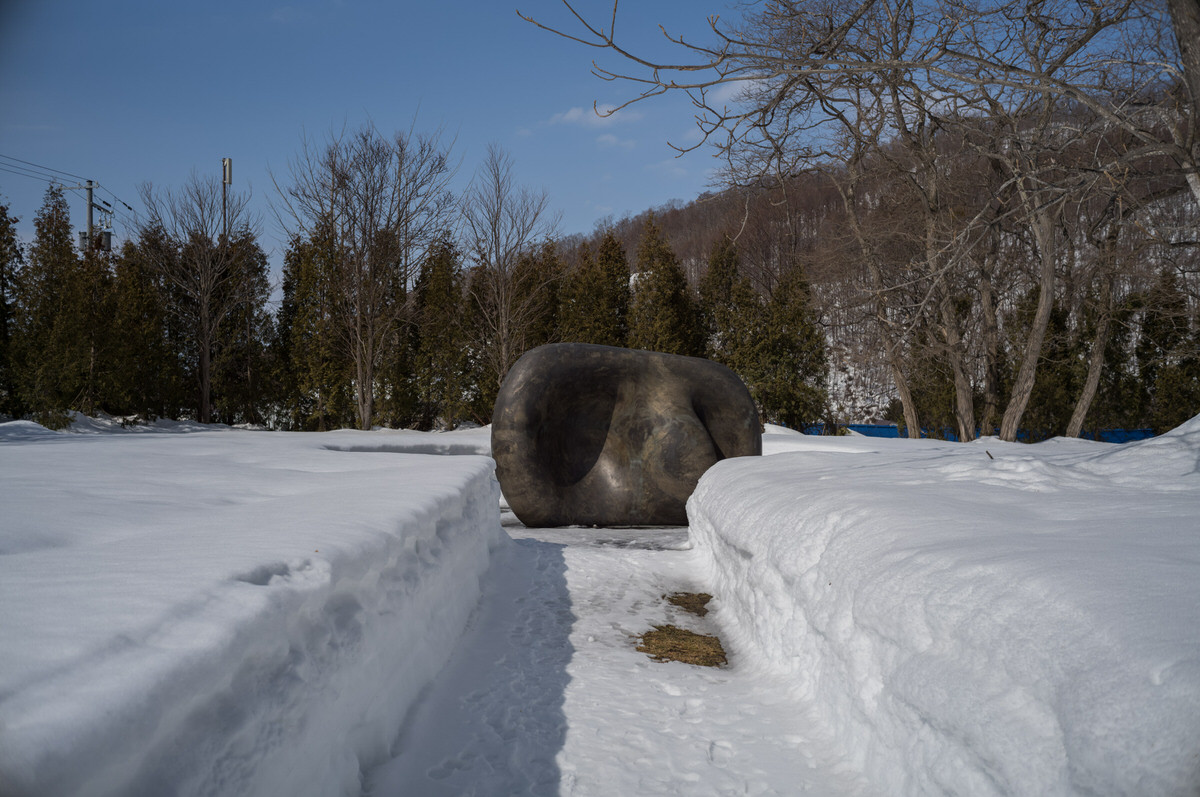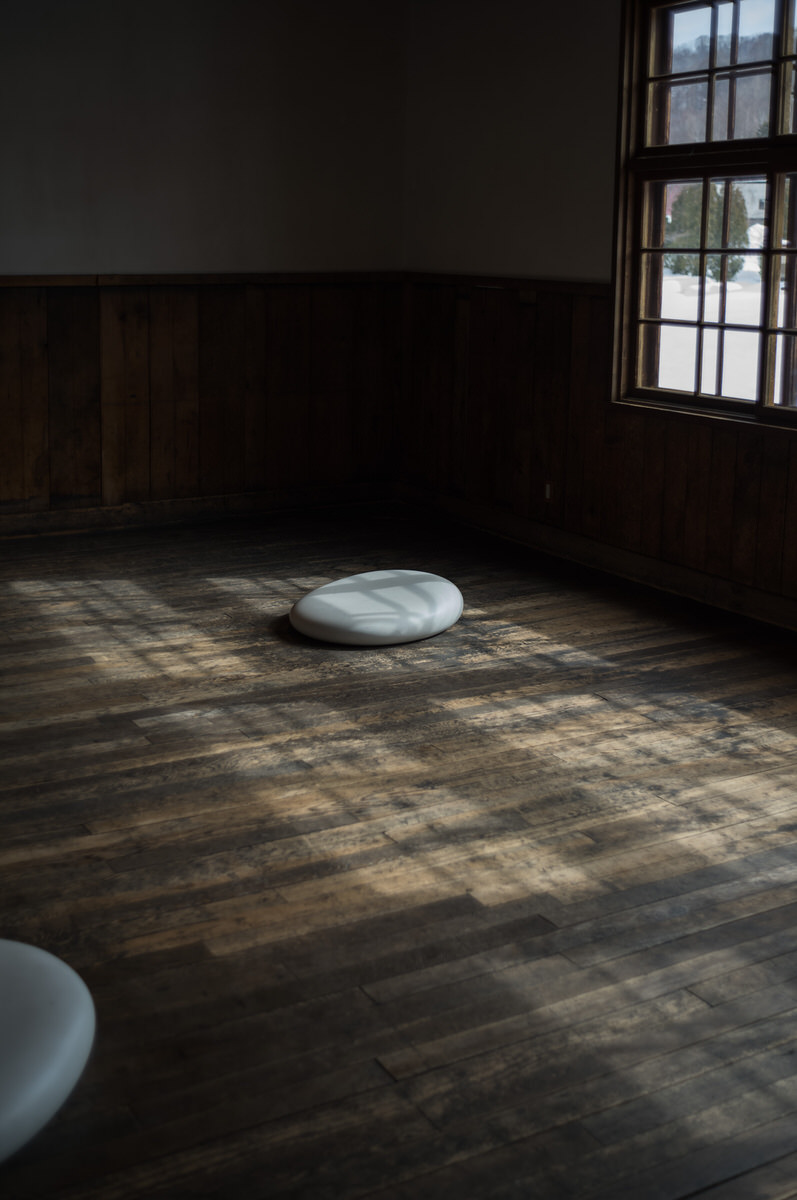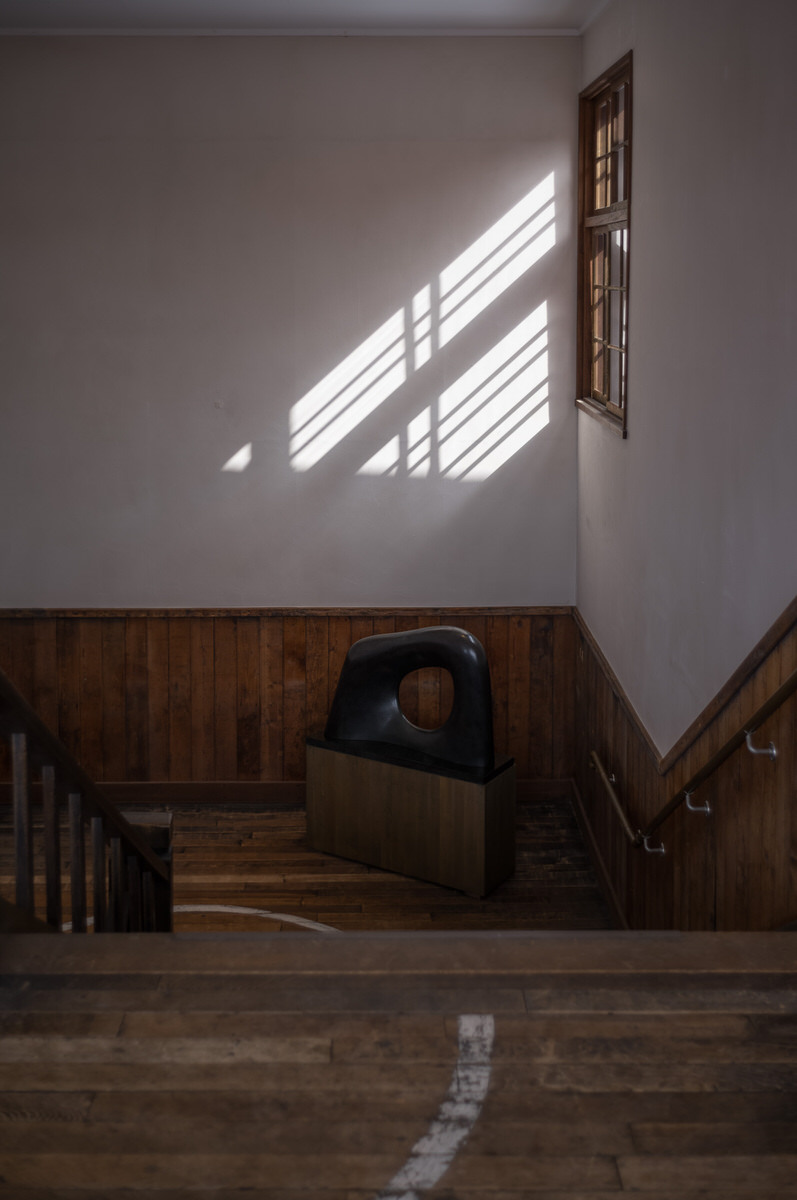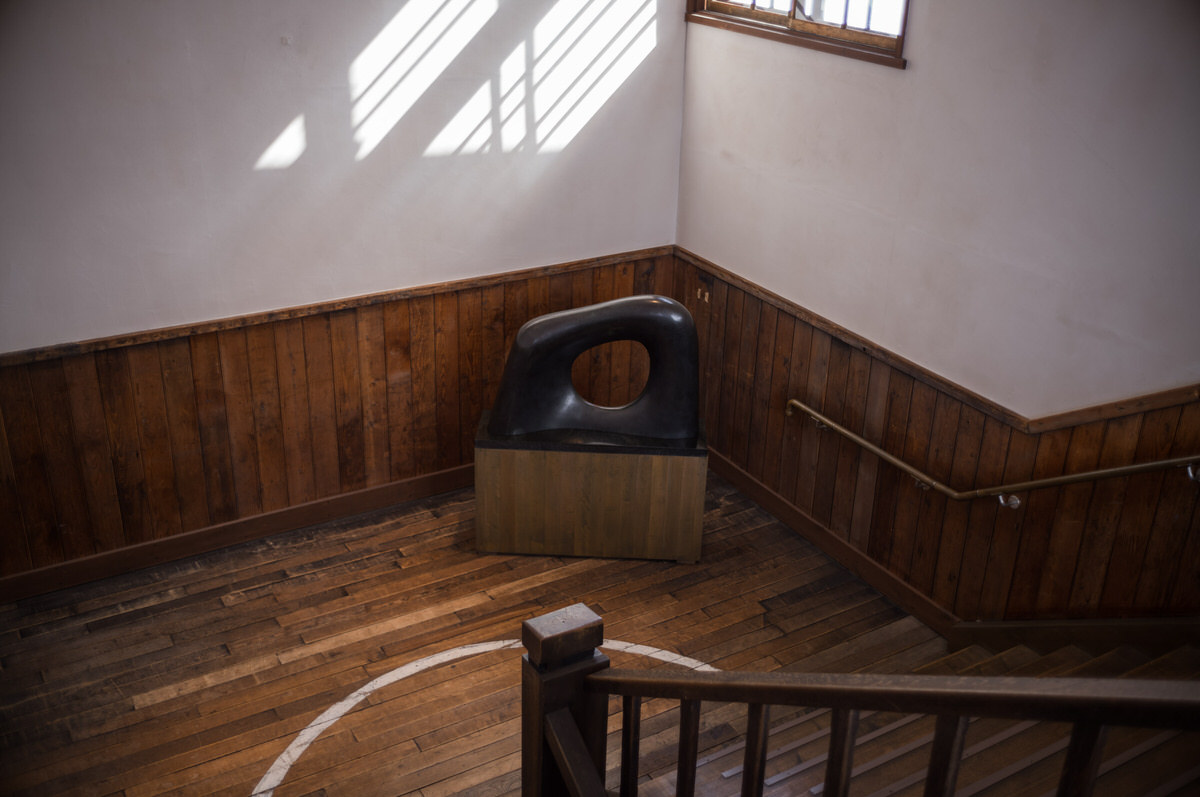
I made a little trip to Hokkaido the other week. It had two purposes: To hang out with a good friend (which is what 90% of all my non-walk-related travel is centered around; increasingly this is all I’m interested in doing — intentionally maximizing time with people I love, location be damned (not that Hokkaido is a bad location, it’s fabulous)), and to investigate the jazz scene of Sapporo. In my Tiny Barber, Post Office walks of 2021, I had swung by Hakodate and was impressed by the jazz there, and Sapporo seemed to offer even more.
But this isn’t a post about jazz, it’s a post about sculptures.

That friend I went to see was leading a tour up north, and I was sneaking alongside for the last few days. With the group, I found myself on a bus en route to the village area of Bibai, about an hour north of Sapporo, to the so-called “Arte Piazza” — famed Japanese sculpture Kan Yasuda’s outdoor / indoor museum.
It was early March, and despite the winter season having been truncated somewhat violently (so say the snowboarding friends of mine: “It’s terrible. April thaw on the first of March.”), Arte Piazza was utterly snowed in. It was spectacular — the meter-high walls of whiteness everywhere.
Interestingly, Kan Yasuda doesn’t have an English Wikipedia page. I know, I guess I should start one, but it strikes me as wild that someone this old (78), with this much work all over the world, and this much attention and adoration doesn’t have a Wikipedia page (fickle, those Wikipedia gods). So I’ll crib from his homepage profile:
He moved to Italy in 1970 on a fellowship from the Italian Government and studied with Professor Pericle Fazzini at the Academy of Fine Arts in Rome. Afterwards he set up his studio at Pietrasanta in nothern Italy, world famous for its superior quality marble. There he continues to live and work at marble and bronze sculptures.
This is the salient chunk of KAN history (he likes to write his name just as KAN, all caps, which I dig — KAN. Feels appropriate given the hard edges of all those letters and consonant-punch of the said-out-loudness of it): His going to Italy, and then staying in Italy. His wanting to be close to the good stone, his forming of relationships with the quarrymen, of getting calls when special hunks were found — because the kind of pieces he wanted to produce required best-of-class marble. Huge chunks of best-of-class marble. From which he’d make his smooth white eggs or soft-edged loops.
KAN wants people to sit on his stuff, to touch his work. He wants a little kid to get too excited and vomit on his “Ishinki” blobs of marble — blobs so organic they look like enlarged puddles of spilt mercury. Old people sit on his stones and the young dive over them. It is work that demands to be touched. Outside it soaks up the sun and radiates as if alive, creating a strange empty border between certain pieces and the banks of snow around them.


He works in marble and bronze. For fifty years he’s been massaging his forms. Once you recognize them, they’re everywhere. In front of Tokyo Midtown sits a dark marble loop, exposed to the elements, welcoming little rubs. At the entrance of Sapporo Station, too, a similar “Myomu” piece greets all who arrive.
He doesn’t want to be overly guiding or precious or dogmatic, so he doesn’t like to name his pieces. They all have the same names, based loosely on their form. The loops of “Myomu,” the egg-like blobs of “Ishinki,” the “Tenpi” marble cradles, the “power spot” energy-gathering gates of “Kimon.” Like this, he scatters his pieces around the world.
KAN’s first 45 years of life overlapped with Isamu Noguchi’s last 45 (a man with an extensive Wikipedia page, we should note). There is some superficial resemblance to their output, but the closer you look, the more obvious the differences.
Our guide at Arte Piazza tells us how she feels that KAN’s work draws people in, while Isamu Noguchi’s work creates barriers. And this is true, experientially. Compare Noguchi’s incredible outdoor garden museum in Takamatsu to KAN’s — it allows only a handful of people in a day. It is his studio as he “left it” before he died. I’m not sure you can touch anything. Certainly, it doesn’t feel like you can touch anything. And you aren’t allowed to take photographs. It’s all very rigid (although it is exceptional and you should absolutely visit given the opportunity). Though some of his forms — his big loops of marble, for example — are present in KAN’s work, they don’t welcome you in the same way. They’re a little too perfect, a little too measured. You get the feeling that Noguchi would have been appalled if a child threw up on “Sun at Midnight.” (To be fair, he has pieces like Black Slide Mantra (also in Sapporo) that are explicitly made for kids to play on.)
Unlike Noguchi, there is a winking formality, a kinda, “Hey, yeah, this is tough to do but let’s have fun, too” bit of playfulness to KAN’s work. His museum in Bibai was built on the grounds of a retired elementary school. He kept the gymnasium as is, populating it sparsely with blobs of marble and hunks of bronze. They hold concerts in the space, and sometimes listeners sit right on his sculptures.
Another school building has been converted into a museum. Little Tenpi and Ishinki are scattered here and there in what used to be classrooms. The contrast is astonishing — wood worn from decades of kiddy pitter-patter, pitted against a shock of marble, afternoon sunlight slicing through the big, open windows. Look close and you’ll find marks on door frames ticking off growth.
It felt good to “find” KAN’s work and then spend time with it, remembering then, in hindsight, the many places I had previously seen it, though never touched it. Now I know — go, place your hand on the marble or bronze, feel the warmth, take a seat. His work is there for you to use.

